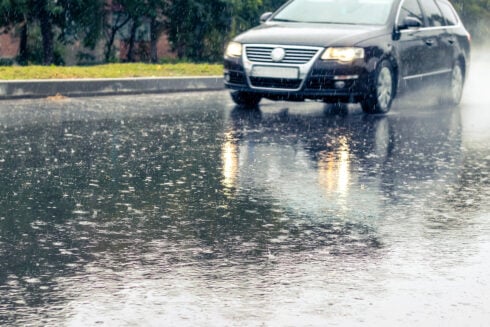At first glance, the fields of artificial intelligence (AI) and physics appear unrelated. But they have a strong link that is becoming increasingly important for the future of science, technology, engineering and mathematics (STEM) education in Europe. The more AI develops and integrates itself into nearly every industry, the more important it is to understand the physical world through physics. Meanwhile, AI also puts new tools and techniques at the physicists’ disposal that can speed up physics research and help the physicists to make sense out of huge data sets.
In this article, we will investigate the rise of the use of AI and physics, and how cooperation between them is important for training the upcoming generations of scientists and engineers in Europe. We will explore how AI can be made more helpful to physics education, education and discovery, as well as describe how understanding physics better makes for better and more useful AI. Strong foundations in both disciplines will provide European students with the skills required to drive innovation in the 21st century.
The Growth of AI in Science and Engineering
The last decade has seen monumental growth in artificial intelligence, machine learning, and deep learning. AI systems like Smodin AI physics solver are now capable of matching or surpassing human-level performance on a variety of complex cognitive tasks. From self-driving vehicles to personalized medicine and advanced chatbots, AI is transforming nearly every technology sector.
This explosion of AI capabilities is also making an impact on scientific domains like physics. According to recent surveys among physicists in Europe, adoption of AI technologies has significantly increased over the last few years. A survey conducted among Danish researchers in early 2024 evaluated 32 generative AI (GenAI) use cases across five research phases: idea generation, research design, data collection, data analysis, and writing/reporting. This comprehensive study highlights the growing integration of AI tools throughout the research process.
In addition, the investment in AI for science is expected to grow even further. Recently the European Commission has announced a €1 billion data and AI as well as robotics investment initiative dedicated solely to increasing the competitiveness of sustainability research. It includes millions of dollars to fund projects that specifically use AI to speed up discoveries in physics, material sciences, climate change and other areas. Given access to computing power, access to big datasets, access to machine learning algorithms, it only increases the integration of AI into the physical sciences.
Enhancing Physics Education with AI
While AI contributes major value to cutting-edge physics research, it also has immense potential for enhancing physics teaching and learning at all educational levels. Introducing European students to AI and its applications in physics from an early age can provide several benefits:
- Increased engagement and motivation. Interacting with AI technologies like simulated physics experiments and intelligent tutoring systems makes learning more interactive, stimulating student interest in pursuing physics.
- Personalized instruction. AI tutors that adapt to individual student needs and learning paces provide a customized educational experience, improving outcomes.
- Deeper conceptual understanding. AI tools can offer real-time feedback, intelligent explanations, and enhanced visualization of abstract physics concepts, promoting better comprehension.
- Preparation for the future. Gaining AI and computational skills relevant for modern physics prepares students for increasingly tech-driven research and job markets.
- Accessibility. Simulated experiments and AI-based learning platforms allow students to gain physics experience remotely, increasing access and inclusion.
To realize these benefits, European educational institutions at all levels must make concerted efforts to integrate AI and promote computational thinking into physics curricula and teaching practices. National science standards need to emphasize AI literacy, schools need better access to AI learning resources, and teachers require training for effectively leveraging AI in instruction. Investing resources into fusing physics education and AI will equip students with the knowledge and skills expected from 21-st century physicists and engineers.
Advancing Physics Research with AI
In parallel with enhancing physics pedagogy, artificial intelligence is also dramatically impacting various physics research fields across Europe. Whether investigating quantum mechanics, astrophysics, thermodynamics, or other domains, AI is providing physicists new methods for tackling long-standing questions.
For instance, machine learning algorithms are applying themselves to extract patterns from huge quantities of data produced from — among other things — particle collider experiments, satellite imagery, and cosmological surveys for hard-to-see patterns and particles. With these points, the most tedious data processing tasks can be automated, so physicists don’t waste so much time thinking about stuff that’s too tedious.
There are AI simulation tools that are rapidly advancing the development of useful quantum computers in quantum physics. Using perfectly mimicked complex quantum systems, these simulators help engineers systematically fix any error in their tons of programming and get qubits — the building blocks of quantum processors — to the point of being more robust. With such AI testing, quantum computers can be scaled to sizes that will finally enable them to solve valuable real-world problems.
Across physics, AI is driving more predictive modeling faster computations, and optimized experimental designs. This allows European physicists to achieve more accurate insights with less data. It permits tackling multifaceted problems using multimodal data and performing research at unprecedented scales. Integration with large-scale AI will be essential for realizing ambitious scientific goals like fusion energy, better climate models, and detecting new particles.
Overall, artificial intelligence is helping physics research become exponentially faster, cheaper, and more productive. But fully capitalizing on the promise of AI in physics requires initial investment into education. Cultivating AI readiness among physics students today will ensure a new generation of researchers is fully equipped to exploit AI tools for tomorrow’s discoveries.
The Physics Behind AI
While physics stands to gain tremendously from artificial intelligence, the reverse is also true – progress in AI is reliant on the physical sciences. At its core, all AI depends on computational hardware governed by the fundamental laws of physics. Understanding these physical systems down to the atomic scale is key for improving AI efficiency and scalability.
For instance, heating chips and the rising energy costs present major bottlenecks in modern AI. With the complexity of the AI models increasing, it becomes difficult to keep the temperatures low and power consumption at reasonable levels. However, thermodynamics and quantum physics provide insights into new materials and device architectures for faster and cooler computing.
After all, hardware innovations that have revolutionized AI capabilities in the past are indeed physics-based. The material, electronics and quantum mechanics advances that led toward breakthroughs of integrated circuits, graphical processing units (GPUs) and quantum bits are all included in that. As we move beyond current AI horizons, European physicists should continue to explore such things as novel optics or quantum computing paradigms
Beyond computing hardware, physics also plays an instrumental role in creating AI models that actually align with the real world at a deep level. For machine learning algorithms to work properly, they need structured datasets that obey the basic rules of physics. Systems trained on datasets with incorrect or missing physics fail to generalize reliably.
For self-driving cars, for instance, the AI software relies heavily on simulated sensor data. If the simulation does not accurately encode laws of perspective, light, motion, mass, friction, etc., then the vehicles will not navigate real roads safely. Only by incorporating proper physics can reliable AI be developed.
Therefore, multidisciplinary collaboration between artificial intelligence and physics researchers is imperative. Jointly addressing challenges like energy-efficient hardware, quantum computing, and physics-based simulations will drive progress in both fields further. With strong physics fundamentals powering AI advancement and vice versa, European science and technology innovation will accelerate enormously.
Policy Recommendations for Europe
To fully capture the benefits of the AI-physics partnership described, European policymakers should consider several recommendations:
First, increase funding programs specifically targeted at projects combining AI and physics across research domains like particle physics, quantum information science, climate modeling and clean energy. Prioritizing financial incentives will drive rapid progress.
Second, launch a continent-wide educational initiative to integrate AI and physics at all scholastic levels. National science standards and curricula that feature data-driven methods and computational thinking are critical for readying students. Equally important is improving access to computational resources and AI training for instructors.
Third, establish multidisciplinary AI and physics research hubs and consortiums across European university networks. Bringing together diverse scientists and engineers will spur creativity and knowledge sharing at the intersection of these fields. Such collaborative ecosystems often nurture revolutionary ideas.
Fourth, continue developing European regulations and ethical frameworks to ensure AI and physics research responsibly serves societal needs. Proactively shaping policy prevents misuse as these technologies become more advanced and embedded.
Finally, increase public dialogue and engagement around AI and physics through forums, demonstrations, and open houses. Broadcasting these emerging technologies builds enthusiasm and talent pipelines vital for future innovation.
If European nations can align around such proposals, unprecedented progress awaits at the nexus of artificial intelligence and physics. Combining strengths and overcoming challenges together will realize a shared vision for technology serving humanity’s long-term prosperity. The future of AI and physics are intertwined, and so too must be Europe’s strategy for leading 21st-century science and engineering education.
Conclusion
Artificial intelligence and physics intersect in a variety of ways: intelligent tutoring tools, automated experimentation and so on. These two fields are more and more dependent on each other for creative boundaries, expanding their domain and training the next generation of European scientists and engineers.
Integrating AI methods across physics education and research will accelerate innovation in tackling problems like clean energy, climate change, quantum technologies, and more. And incorporating physical realities into AI development is essential for creating systems that work efficiently in the real world.
Considering that AI is ubiquitous within industries, it will benefit us if we have foundational knowledge of physics to use these tools responsibly. AI is what bridges physics into the data and calculations that will be needed to break it in new horizons.
Funding, and multidisciplinary projects, as well as the updating of curricula, could future-proof their leadership in science, technology, and STEM education in the 21st century by prioritizing the AI-physics partnership today. The moment has come to converge.
Click here to read more Other Posts News from The Olive Press.








